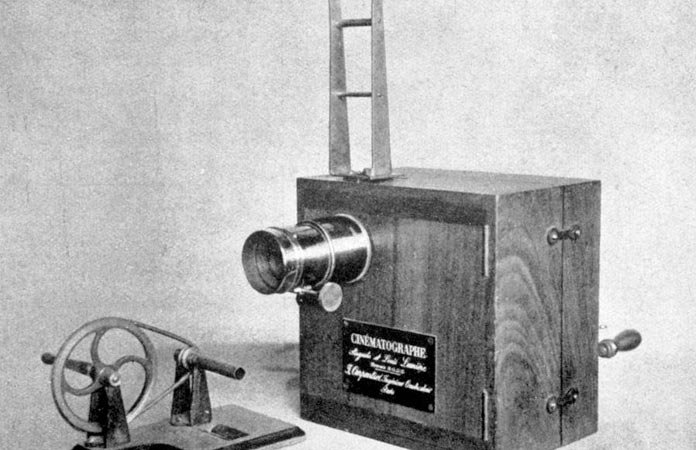Today in Pop Culture: Let’s All Go to the Movies
Published on December 28th, 2015 in: Movies, Science and Technology, Today In Pop Culture |The year is 1895. At the Grand Cafe in Paris, France, two brothers are showing off their latest invention. It’s a strange-looking contraption–boxes and a crank all precariously perched atop a wooden tripod. The brothers, Lumière by name, call their odd machine a cinematograph. It is a combination camera, printer, and film projector. And at the Grand Cafe, the crowds have come with money in hand to see moving pictures of the city they live in, the City of Lights.
It is December 28 and, on this day in pop culture history, the ritual of going to the movies was born.
Making pictures move, that most magical of sciences, was a practice that moved quickly around the world. Thomas Edison became America’s movie king. Louis Le Prince shot England’s first moving picture. It was a rapidly growing industry, an amazing new form of entertainment, and the viewing public couldn’t get enough.
The first American cinema was the Vitascope Hall which opened in 1896 in New Orleans. Twelve years later, the New York Times published its first film review. That’s a big deal. Suddenly, the fad that had become an industry was producing art, worthy of writing about in the country’s most important newspaper.
Los Angeles became the epicenter of American filmmaking because of the consistently nice weather. The climate allowed directors to make movies all year round, filming outside, using different locations and terrain. Soon after that, movie studios began to rise up, headed by men with familiar names like Goldwyn, Fox, and a couple of brothers named Warner.
Some theaters were called nickelodeons, because that’s how much it cost to get in. Five cents for a movie ticket. That seems unfathomable now.
This isn’t meant to be some kind of low-grade Ken Burns article, but how much money we spend on movies is interesting. Look at the 1950s which, in a cinema sense, were much like the decade we’re in now. At both points in time, science fiction is a giant box office draw and 3D movies are all the rage.
In the year 1956, the highest grossing film was The Ten Commandments, a huge Biblical spectacle, filled with special effects, huge stars, and some terrible dialogue (“Look, Grandfather! Nubians!”). The Ten Commandments pulled in $43M, literally twice as much as the second highest grossing film, Around the World in 80 Days, which raked in a little over $23M.
Sixty years later, a movie that makes $23M can be considered a failure. This year’s highest-grossing movie was the reboot we didn’t know we wanted, Jurassic World, which managed to make $652M in America alone. That’s a whopping $609M more than The Ten Commandments, only 60 years ago!
For all the complaining about the economy we hear in the news, somebody sure has some disposable income.
It’s the movies, though. We make the room in the budget for it. We make sure we have the money to go see the newest ones. It is a ritual, and America practices it every weekend. Face it: movies are church. We Fandango our way into cinemas across the country, pay more for popcorn and a drink than we do for half a tank of gas, and we beg to be entertained. Show us love stories that end happily. Frighten us. Thrill us! Blow something up! Get us away from our real lives and redeem us.
The movies are where are our heroes are. And we need our heroes, real or imagined.
Just don’t forget that the real heroes were a couple of French guys, showing what amounts to home movies, to paying crowds in a cafe in Paris. Humble beginnings for one of the greatest industries, and perhaps the greatest cultural mirror, in the world.

Time limit is exhausted. Please reload the CAPTCHA.